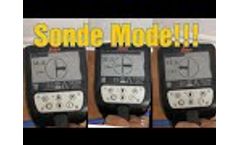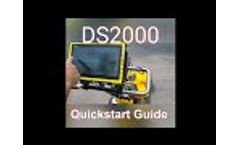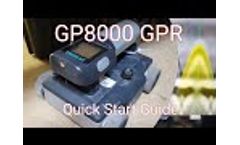Soil & Groundwater Videos
-
Premium
GPR (Ground Penetrating Radar) for Utility Locating Webinar Replay - Video
In this live streaming webcast, LearnGPR will review the basics of Ground Penetrating Radar, compare GPR to other locating equipment, and answer questions about using GPR for utility locating. LearnGPR is supporting World Trenchless Day with this live event. Visit LearnGPR.com and sign up to receive free training videos every Monday in your inbox. LearnGPR.com is an online training platform for ...
-
Premium
Best Practices in GPR: Interview with Shawn Patch - Video
In this video I interview Shawn Patch and Sarah Lowry from New South Associates about GPR survey, working with government agencies on geophysics projects, managing customer expectations, and common mistakes to be aware of. LearnGPR.com is an online training platform for Ground Penetrating Radar that helps civil engineers, utility locators, and others learn about GPR through fun and engaging ...
-
Premium
Multiple Methods and Best Practices in GPR- An Interview with Brian Jones from GSSI - Video
Pre-order our new book Ground Penetrating Radar: A Practical Guide For GPR Users at http://learngpr.com/books. In today's GPR Hot Seat is Brian Jones from GSSI, a manufacturer of ground penetrating radar systems and other geophysical instrumentation. We discuss two recent articles written by Brian. In the first article, he summarizes the benefits of using multiple sensors for conducting ...
-
Premium
How to Show All of Your GPR Responses in A Single Image - Ground Penetrating Radar for Concrete - Video
Sometimes when working with gpr data we have responses from different features at different depths that dont show on all of the time slices. It can be tough to convey this information to a customer or even make acceptable interpretations. One way to overcome this is with an overlay function in gpr slice software In this video I show and compare traditional slicing with overlay analysis using data ...
-
Premium
Can Ground Penetrating Radar (GPR) Detect Corroded Rebar in Concrete? - Video
In this video I answer the question "can ground penetrating radar (GPR) detect corroded ...
-
Premium
Past, Present, and Future of GPR: An Interview with Greg Johnston from Sensors and Software - Video
In this interview with Greg Johnston from Sensors and Software, we discuss the history of ground penetrating radar (GPR), its current state of use in various industries, and what the future holds for GPR practitioners. LearnGPR.com is an online training platform for Ground Penetrating Radar that helps civil engineers, utility locators, and others learn about GPR through fun and engaging courses ...
-
Premium
GPR Hotseat Episode 5: Mike Twohig SUM or SUE? History and Future of Subsurface Utility Mapping - Video
In this interview Mike Twohig from DGT Associates breaks down the history of subsurface utility mapping, talks about bad practice, who should be responsible, and the future of total asset documentation. He reviews 3D deliverables created from many field tools from several ongoing projects. If you use GPR and didn't know how this worked, then you should get further training. Check out our upcoming ...
-
Premium
How Does Ground Penetrating Radar (GPR) Distinguish Between Rebar and Voids In Concrete? - Video
In this video I discuss the importance of color schemes and response polarity for distinguishing between rebar and voids embedded in concrete during ground penetrating radar survey. The polarity of the reflection can tell the surveyor so much about what is below the surface. Understanding this concept can help your interpret the subsurface with much greater accuracy. LearnGPR.com is the ...
-
Premium
Background Filter for GPR - An Example Gone Right! - Video
Filtering your GPR (Ground Penetrating Radar) data can help enhance your ability to identify and interpret targets of interest, or, it can destroy your ability to see targets of interest. Practitioners must be careful when applying filters so they do not remove targets from the data set. One way to make sure that targets of interest are not being removed is to compare your data to its previous ...
-
Premium
Multi-Frequency GPR Systems: Data Comparison (Ground Penetrating Radar) - Video
A recent trend in ground penetrating radar is the emergence of multi-frequency systems. These units have 2 or more GPR antenna on board which provides several benefits: 1. The systems can scan at different depths. 2. The higher frequency antenna will produce higher resolution. In this video, I show you how a 250 MHz antenna was able to identify a target that the 700 MHz antenna couldn't because ...
-
Premium
A Comparison of Ground Penetrating Radar and EM Locators for Utility Mapping - Video
Will ground penetrating radar (GPR) make EM locators obsolete? In this video I compare these two technologies to see the strengths and weaknesses of each for utility mapping. AND YES...I KNOW...MY HEAD IS HALF CUT OFF!! Thanks for watching anyway :) LearnGPR.com is an online training platform for Ground Penetrating Radar that helps civil engineers, utility locators, and others learn about GPR ...
-
Premium
Increasing Excavator Safety using EM and GPR: Interview with Mike Parilac from Staking U - Video
In this edition of the GPR Hot Seat we will talk with Mike Parilac from Staking U about increasing excavator safety using EM and GPR. How are these technologies being used on job sites? What are the struggles that owners have in training new technicians? How can these be overcome? What will the relationships be between excavators and private locate contractors in the future? LearnGPR.com is an ...
-
Premium
How to Locate a Sonde - Underground Utility Locating - Pipe Locating - Video
In a recent training we conducted One student asked a question about locating a sonde and why the "triple" peak happens. They also were curious how those triple peaks look on the reciever. In this video I describe the different geometry of the magnetic field that a aonde creates inatead of the circular field produced on a service line. Also, the sonde has a clear positive and negative magnetic ...
-
Premium
Leica DS2000 Quick Start Guide - Ground Penetrating Radar - Subsurface Utility Locating and Mapping - Video
The Leica DS2000 is a dual-frequency ground penetrating radar systems is designed for subsurface utility locating and other non-destructive geophysical applications. The 700 MHz and 250 MHz antennas help the user be more efficient and the easy to use software assists new users and allows for easy interpretation, mapping, and reporting. If you use GPR and didn't know how this worked, then you ...
-
Premium
Using Geonics EM38b Conductivity Meter to Locate & Map Subsurface Pipes & Utilities - ASCE 38-22 - Video
In this video we show some basics of using electromagnetic induction (conductivity) to locate underground pipes and utilities. This tool is easy to deploy and has the possibility of identifying pipes, utilities, USTs, voids, and other subsurface objects. It is an important instrument that everyone conducting subsurface utility locates, geophysical investigations, archaeology and forensics, or ...
-
Premium
Proceq GP8000 GPR Quick Start Guide - Ground Penetrating Radar - Concrete Scanning - Inspection - Video
The proceq GP8000 is a stepped frequency continuous wave ground penetrating radar for concrete scanning and structural engineering applications. It has a broad bandwidth which allows the user to image small shallow objects and deeper ones. It also has a live wire detector to assist in identifying conduit. If you found the video useful, please like it and subscribe to the ...
-
Premium
How does Elevation Impact GPR Project Success? - Ground Penetrating Radar - Video
I came on site to conduct some data collection for unmarked graves. I was sent a picture of the site, but it was unclear what the elevation was. The area consisted of significant variation in elevations. As I was walking to the project site I became very nervous! I saw some standing water on the ground and the soil was saturated. I thought to myself, "what if my site is in this nonsense?" There ...
-
Premium
The Other, Other Benefit of Using GPR In Sand - Ground Penetrating Radar - Video
Often when speaking about using gpr in sand we talk about how large its air filled pores are, which makes it less conductive, and allows the gpr signal strength to last longer. Also, with faster wave speeds, the gpr wave will travel further into the subsurface. But, there is another benefit of using gpr in sand...it leaves tracks. This is a small benefit, but so helpul!!!! While gpr can be very ...
-
Premium
GPR Survey After Rain? - How Long Should You Wait to Use Ground Penetrating Radar After A Rain? - Video
Here is a question I received from linkedIn: how long should you wait after a rain to conduct gpr survey? Great question, but not a simple answer ..what else is new? Often we look to wait until the soul has desaturated a bit since water generally increases signal decay rates, possibly making it difficult to penetrate to any meaningful depths of investigation. But, there are situations where you ...
Need help finding the right suppliers? Try XPRT Sourcing. Let the XPRTs do the work for you















